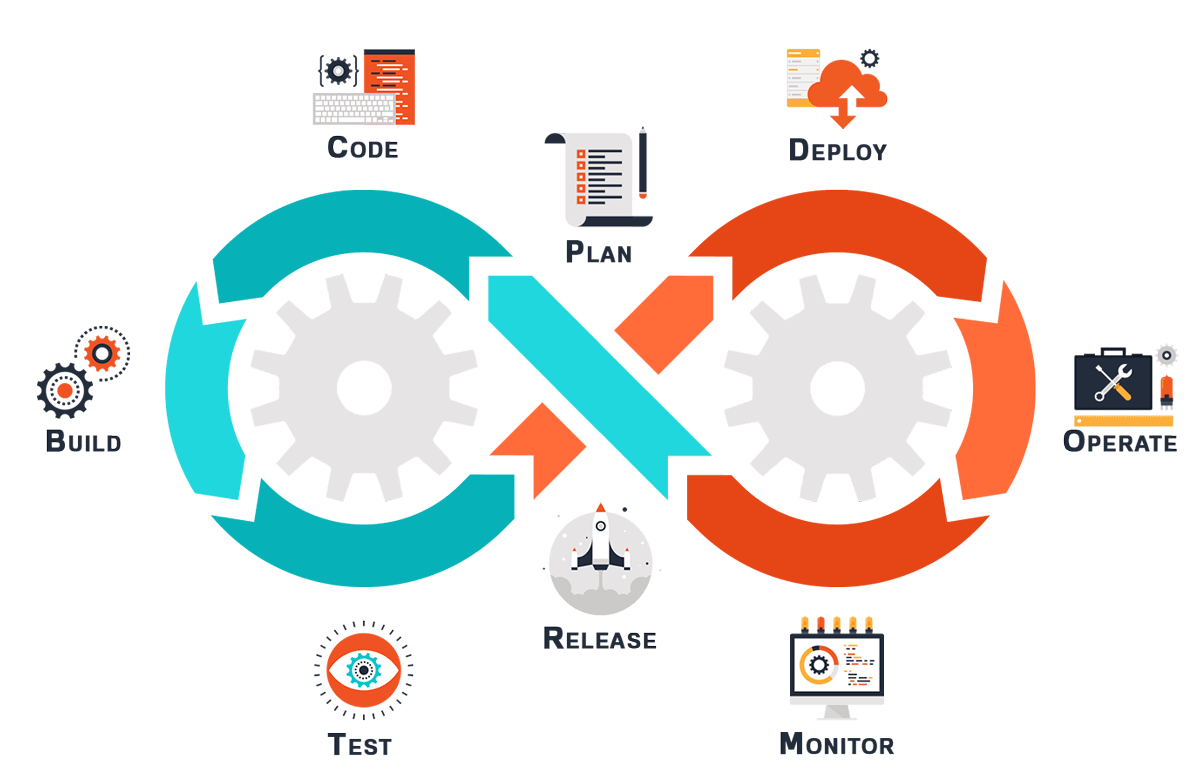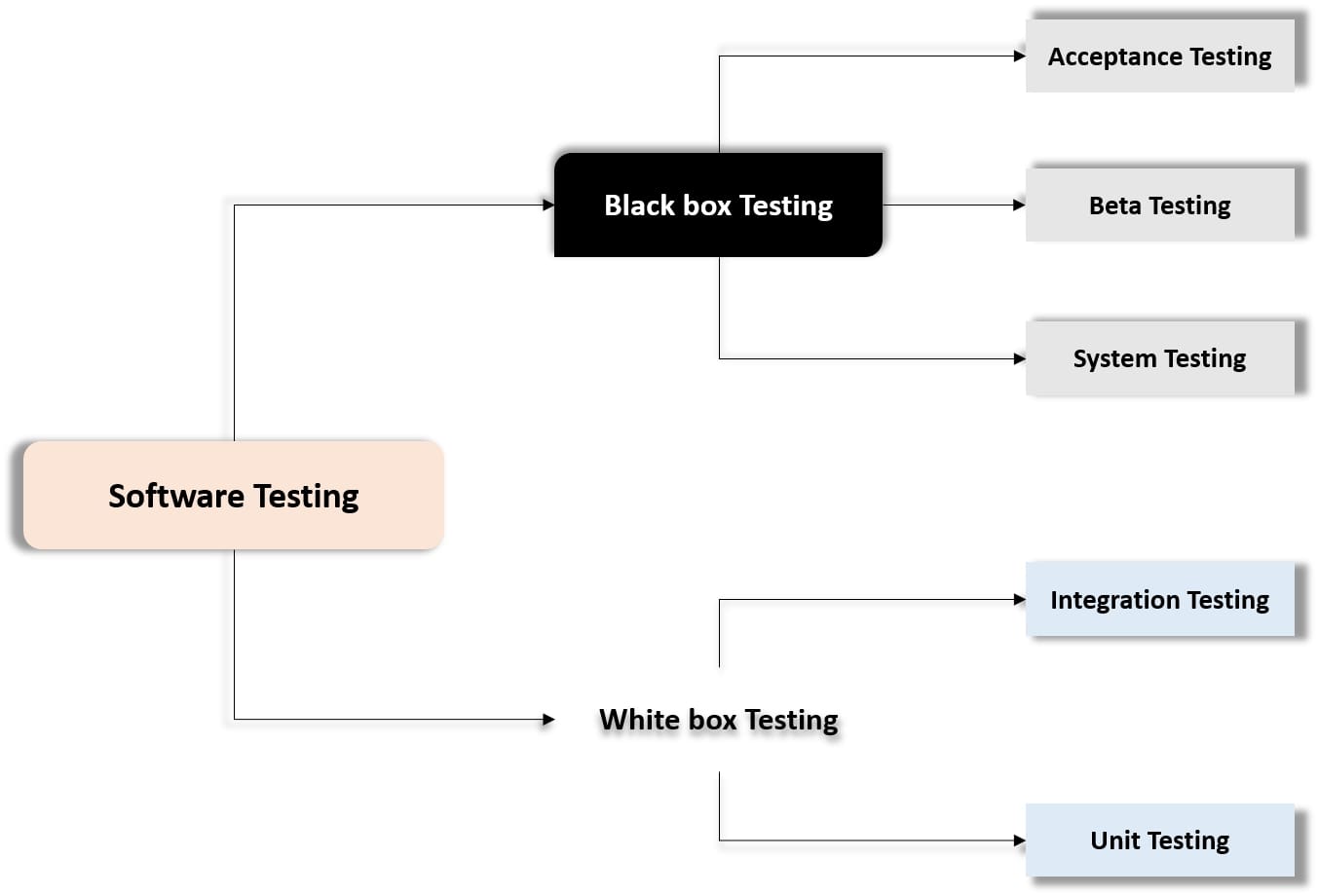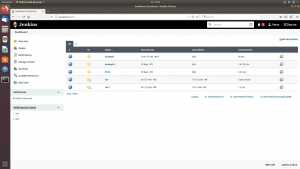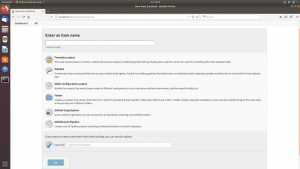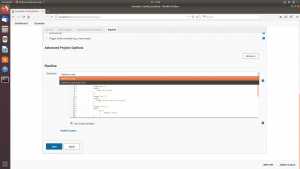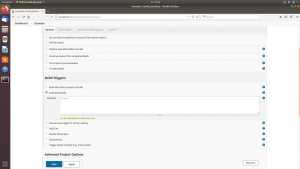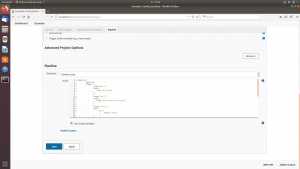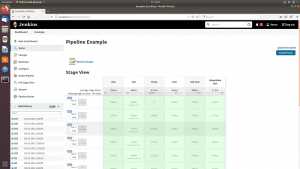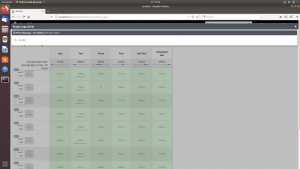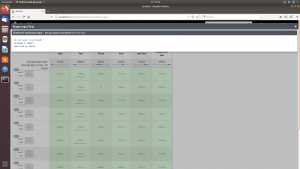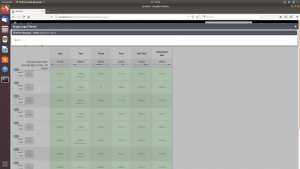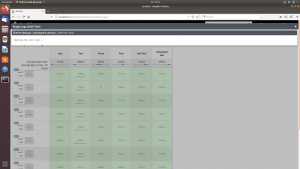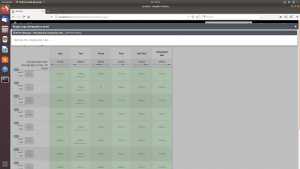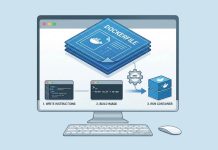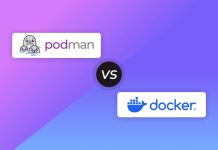
Nowadays, customers seek top-notch applications for their companies or personal use. Tech companies incorporate Continuous Testing methods to satisfy the need to ensure that the software they release to the market will outshine the competition. “DevOps” is the most current of these techniques, generally accepted as an effective solution to managing complex business scenarios that are continuously evolving. It is about improving the time-to-market of a product/service, from conceptualization of an idea to production release to consumer reviews to improvements based on that feedback.
So, to describe continuous testing for DevOps and set out a fundamental framework that could be used by almost any team. You can easily find more incremental bugs and errors by constantly testing during software development and implementation, helping you address minor problems until they become big ones. But, several teams also put the onus of continuous Testing solely on their IT operations in real-world implementations. This can, however, result in a huge backlog of work for system admins and IT security teams, actually contributing to slower Delivery of goods and services.
So, during development, QA, and release, DevOps-centric organizations are seeking ways to disperse Testing between developers and IT practitioners. At each point of software creation and distribution, continuous Testing allows each test to take less time away from development while also uncovering issues. Let’s delve into the strategy behind a continuous testing system geared towards DevOps and how it drives resilient CI/CD.
Overview of DevOps
DevOps, an extension of the methodology of agile software development, emphasizes coordination, cooperation, and alignment, i.e., development, QA, and operations. Continuous Integration & Continuous Delivery are the two basic components of DevOps practice.
A core component of the agile practice is Continuous Integration, which ensures that software is continuously designed and checked and bug-fixes are easily published. It needs members of a team to regularly combine their work on a regular basis. An automatic compilation is then checked for each check-in, enabling early detection of defects. Since defects are found early in development through Continuous Integration, defects are typically less complex and simple to fix. The use of continuous integration software and testing tools for automation is common in the DevOps cycle.
The principle that brings Continuous Integration to the next stage and expands agile practice beyond development in a DevOps cycle is Continuous Delivery. In today’s era of agility, continuous DeliveryDelivery plays an important role. Continuous DeliveryDelivery allows for the continuous adaptation of software corresponding to customer reviews, changes in business strategy, and market changes. All teams (test, support, and development) collaborate and work together in a Continuous Delivery process to simplify and streamline the build, test, and release cycles. The efficient continuous delivery process results in shorter iterations, reduced risks, reduced costs, and accelerated time.
Different types of Software Testing
Before moving on, let me just tell you different types of Testing:
- Black box Testing: A test technique that ignores the system’s internal mechanism and focuses on the output produced against any system input and execution. It is called functional Testing as well. Basically, it is used to test the program. There are few important testing methods that you need to know under Black box testing are,
- Acceptance Testing: This guarantees that the specified functionality required in the device specifications works. It is done to ensure that the product delivered meets the specifications and performs as planned by the client.
- Beta Testing: This is achieved by end-users, an outside development team, or by publicly launching the full pre-version of the beta version of the software. The object of beta testing is to deal with unexpected errors.
- System Testing: It ensures that it still functions by placing the program in multiple environments (e.g., operating systems).
- White box Testing: Technique of research that takes into account a system’s internal mechanism. It is also called Testing of structures and Testing of glass boxes. Basically, it is used to validate the program. White box testing is further classified into,
- Integration Testing: Test type in which to generate the output, a group of components are combined. Often, if software and hardware components have some relationship, the interaction between software and hardware is checked.
- Unit Testing: It is an individual unit or group of similar units being evaluated. The Developer often does it to verify that the unit he/she has introduced produces the expected output against the input given.
Why Continuous Testing?
A seamless user experience is expected by today’s knowledgeable customers. Applications need an exceptional degree of connectivity and dependency on processes, systems, and infrastructure. As Testing needs to ensure that high-quality software is delivered at fast-track speed, testing various complex applications, goods, and services can pose a major challenge.
In Continuous Delivery, Continuous Testing plays a crucial role. It includes the use of agile development techniques and principles for the testing and QA process, providing a more successful testing process. Continuous Testing includes automated end-to-end testing solutions that incorporate current processes of production while excluding errors and allowing consistency across SDLC.
As DevOps promotes a high degree of collaboration among different teams in the value chain of growth, it often erases the boundaries of different roles. It needs everyone to contribute as and when required across the value chain. A developer can then configure deployments, QA engineers can configure test cases for automation, and the QA repository can add test cases for deployment engineers. Together, both of them are accountable for the output and must stick to all deliverables’ timelines.
Initiatives can be taken from the various software development functions used in Continuous Testing.
Continuous Testing should be initiated by development teams testing the performance and functionality of the code they have created. For research, they can use open-source tools like Selenium. In order to ensure thorough test coverage, tests can include functional, performance, UI, API, and more, along with regression tests. Tests should, however, be simple so that developers could develop and execute them on their own.
Operations managers use a few testing tools in the post-production process to constantly test the application to monitor the performance of the applications. A wide-ranging collection of tests can run 24/7 that can give automatic failure warnings.
To keep the process going, QA testers need to ensure that experiments run in parallel.
In order to use the required tests, DevOps teams have to configure a Continuous Integration environment. In the event of any build faults, developers receive an instant message. They must complete the process of Continuous Integration as soon as possible.
What is Continuous Testing?
Continuous Testing is a form of software testing in which the product is tested early, always, and during the whole process of Continuous Delivery (CD). Continuous Testing uses automated checks to ensure that teams receive immediate input during the lifecycle of software development to rapidly eliminate as many risks as possible. In addition, team members are able to learn about their product constantly and what can be done to improve consistency and reliability.
However, incorporating continuous Testing into your business is not an easy process, as you need to build a test plan to ensure a smooth transition. Imagine this: Historically, software testing is performed only after code is written and submitted to the department of quality assurance to be independently reviewed. The code is then sent back to developers to be patched after bugs are discovered. This model for research is relatively practical. It is dangerous, disruptive, and time-consuming, however. Instead, companies expect quick DeliveryDelivery of high-quality goods nowadays.
But what if the avenue for research was different? A simpler and more successful way to reduce bottlenecking between various departments? That is where it becomes useful for continuous Testing. Before writing any new code, checking the code immediately after uploading it to the repository helps find bugs. To implement bug fixes, the extra code will then not have to be changed. Speak about time savings!
Therefore, early in the cycle, software testing that serves as a gatekeeper in detecting vulnerabilities, robustness, and minimizing vital business risks must be automated and implemented. In fact, DevOps has always included the role of testers in the Dev segment, leading to the increase in Continuous Testing (CT), bridging the gap between Continuous Integration (CI) and Continuous Deployment (CD) (CD).
Key Components of Continuous Testing
Continuous Testing is a collection of various activities, processes, and resources for development. It is not feasible to create a one-size-fits-all system for continuous Testing for any engineering organization. However, you can identify the main elements needed for any ongoing testing process and then find out how they relate to your circumstances.
Continuous Integration:
CI is a practice in software development where engineers send code on a regular or multi-time-a-day basis to a central repository. Automated build testing, however, is an important part of continuous integration since DevOps-minded teams need to identify code bugs and defects before they make it out of and into production from a staging area.
Unit Testing:
Unit testing is a type of software testing that measures individual source code units and necessary control details, usage procedures, and operating procedures to determine if they are ready for use. Unit testing is essentially a great way to ensure that different source code units are properly connected and working with each other.
Performance Testing:
Performance testing is more specific to the application or service that is supported by your team. In general, it is used to monitor the product or feature’s speed, reliability, and overall uptime. But, performance testing of software is crucial because it is one of the best ways to determine exactly how your service will be experienced by customers. In addition, in both staging environments and production, performance testing is often performed, helping you proactively detect incidents.
Integration and Functional Testing:
In the sense that you’re testing individual units of a system, integration testing is similar to unit testing. But these individual elements are combined into a group where they can be tested together by integration testing. This level of Testing will identify potential failure points between integrated units and reveal weaknesses, ideally before they reach the output. This often fits in with functional Testing, where a system’s elements are tested against the system’s requirements, expectations, and specifications. For companies, functional Testing is important because they need to know exactly how a system should respond and whether or not the system, especially in production, responds properly in a consistent way.
End-to-End Testing:
Software engineers will often run end-to-end tests at a higher stage to ensure that data or workflows move exactly as they are expected through an application or service. For the general reliability of a product, end-to-end Testing is imperative. End-to-end Testing, however, will often not help you to find the specific cause of an error or an incident but will only tell you that something is wrong.
Acceptance Testing:
Does the application or service satisfy the company’s requirements, and does it comply with any internal or external regulatory requirements? One of the last tests you run will be acceptance testing, determining if the feature or service is ready to go to production.
Smoke Testing:
Smoke testing is an interesting priority exercise in that the organization of DevOps has to figure out and then begin testing the key elements of a system. Testing the most important functions and processes continuously within an application or service will ensure a high level of efficient customer availability.
Chaos Testing:
In order to see how a system will react to unknown factors and stress, actively inject chaos into your staging and production environments. On a regular basis, Chaos testing may help to detect issues that may not yet have been found in infrastructure and applications. Proactively conducting stress tests and implementing chaos engineering as a standard practice will also create engineers who, when they hit your production environments, are more ready for real incidents.
Automation:
For continuous Testing, automating any and all of these types of tests mentioned above is crucial. Otherwise, you’ll spend all the time hiring new developers for QA, engineers who will spend time manually checking the whole system instead of designing new features for customers. Notice that continuous automated Testing must be useful not only to your clients but also to your workers, for all individuals behind your products.
Continuous Delivery:
Continuous Delivery comes with continual Testing. You find yourself shipping to production more frequently, and with fewer bugs, if you know, the code works as soon as it is continuously incorporated into a shared repository. You will continue to offer value to consumers on a regular basis with greater automated Testing and a commitment to continuous manual Testing at all stages of the product development and release lifecycle.
Shift left with CI/CD:
The quicker you figure out the bugs in the program, the better the quality of the object. By moving tasks to the left, teams can do this. This implies transferring them early in the life cycle of software creation (SDLC). Ongoing integration and implementation are followed by the DevOps team. The CI/CD approach assists in the regular DeliveryDelivery of high-quality applications. This procedure also makes the distribution of applications more predictable.
Shifting left into CI/CD means that instead of fixing them later, you concentrate on avoiding problems. The teams identify them early, even if problems occur. This leads to faster error resolution. This shortens the duration of the test cycle and retains the code’s consistency. The shift-left strategy also allows the feedback loop between developers and end-users to be cut short.
They carry Testing into their code creation processes early as teams “shift left”. A number of tests are conducted during the coding process instead of submitting several changes to a different test or QA team so that developers can correct bugs or enhance code quality when focusing on the relevant portion of the codebase. The ability to move left is focused on the practice of continuous integration and continuous delivery (CI/CD) and implementation.
In addition to a change in viewpoint, this approach includes individuals and activities. The BA and production teams work together while choosing stories for a publication. This ensures that everybody in a project has a stake in the product’s flawless Delivery.
Tools used in Continuous Testing
In software delivery, the third wave of test automation introduces more ideas, one of which is ‘continuous testing.’ However, it is difficult to master continuous Testing; it is even more overwhelming to select the right continuous testing method.
It’s extremely helpful for your software testing and delivery performance to use the right method. I have compiled the most common continuous testing tools that are currently in the market. Based on certain parameters, including types of supported test, learning curve, used programming language, continuous testing support, CI/CD ecosystem support, breakthrough features, and so on, we evaluated the features and potential disadvantages under each tool.
Selenium:
Selenium, when it comes to automated web research, is possibly the family name. Selenium is an open-source platform that is a perfect candidate for a team that is leaning towards continuous adoption of tests. Selenium is a go-to option for engineers with an advanced level of programming ability in Quality Assurance (QA). It takes a detailed understanding of how the system works to set up and execute the current period of growth. A broad range of common OSs (Windows, macOS, Linux) and browsers (Chrome, Firefox, Safari) are supported by Selenium for cross-environment Testing. However, as you need to have some technical expertise and skills, there are several difficulties when combining Selenium with other instruments in the CI/CD pipeline. Therefore, on top of Selenium, there are several alternatives (e.g., Katalon Studio) that provide continuous out-of-the-box testing components without requiring users to write scripts and customize them from scratch.
Katalon Studio:
Katalon Studio is a robust continuous testing solution developed on top of Selenium and Appium that addresses the sharp automation of demand testing in CI/CD and DevOps. Katalon Studio facilitates Testing of the network, API, mobile, and desktop applications through operating systems such as Windows, macOS, and Linux. It is a single collection of features ranging from tracking test measures, running test cases to providing infrastructure, reporting on analytics, and integration of CI/CD. With seamless Jira Agile integration and native CI/CD integration with the most common CI software, Katalon Studio supports continuous Testing (e.g., Jenkins, Bamboo, Azure, and CircleCI). With codeless test creation for beginners and advanced expansion for experts, Katalon Studio is known to be easy to use. The Katalon Store plugins will help you expand automation functionality and easily integrate with other applications for CI/CD. Full infrastructure support is provided by the solution. On all OSs, browsers, and devices, as well as on cloud, on-premise, and hybrid environments, you can run tests. Finally, a robust collection of informative reports, real-time reporting, and instant feedback mechanisms are offered by Katalon Studio. As well as your team’s success, you can fully monitor the quality of your product. As soon as they appear, Katalon’s instant feedback loop will enable you to identify any increasing problems.
Appium:
Appium is an alternative to Selenium but designed for mobile Testing. It is a common platform for mobile Testing that has been adopted by several teams. For continuous testing needs, Appium can be leveraged and flexibly tailored. In addition, a significant number of providers of cloud devices have allowed users to run tests with Appium on their own infrastructure. Using Appium helps you to directly write, upload, run, and view test results in the cloud. However, the difficulties lie in the initial steps of integrating with the environment of CI/CD. Similar to Selenium, Appium needs advanced knowledge to set up and execute testing frameworks. This makes Appium most ideal for teams that have already understood this system and the industry’s CI resources in depth. There are, however, several commercial and free testing tools which can address this issue, such as Katalon. Katalon comes with an integrated Appium framework, so you don’t have to go through the set-up and configuration hassle.
Benefits of Continuous Testing
- Ensure that as many mistakes are identified before being published into development
- Available tools to make the testing process simpler, quicker, and more accurate to enable continuous Testing
- Checked during the cycles of development, Delivery, Testing, and deployment
- Elimination of silos between teams for production, testing, and operations
- Run parallel performance tests to improve the speed of test execution
- Achieve continuous enhancement and efficiency
- To minimize time spent Testing, automate the test cases
Demo: Continuous Testing using Jenkins
We shall create a small scripted pipeline using Jenkins for continuous testing.
Step 1: Open Jenkins Dashboard and click on “New item”
Step-2: In the next step, give a name to your pipeline and select “pipeline” as your project and click on “ok” to proceed
Step-3: In the next step, scroll down to the pipeline, and under ‘Definition’ choose if you want a declarative pipeline or a scripted one. If you are looking for a scripted pipeline then choose ‘pipeline script’ and start typing your code
Step-4: Add your code
Step-5: As it is Continuous testing, you can build triggers for every minute, by clicking on build periodically and scheduling it
Step-6: Finally, click on ‘apply’ and ‘save’. With this, you have successfully created your first Jenkins pipeline.
Step-7: Click on Build now to run your code
Now, that your build is complete you can check on logs for the result.
Step-8: The first log displays “Hi Folks!” as in the script
Step-9: In the next log you can see that it asks me to proceed or not, if you click on to proceed the testing continues
Step-10: In the next log, it displays “Hello” as in the script
Step-11: You can see the unit test running
Step-12: You can see the integration test running
Step-13: You can also look into the console output
Congratulations! Now, you know how to write a script and perform continuous testing on Jenkins.
Conclusion
That’s it, people!! I hope that you have found the blog “Continuous Testing Tutorial” interesting. In the comment section of the “Continuous Testing Tutorial” site, please share your thoughts. You should consider taking a popular DevOps Foundation Certification course from Invensis Learning now that you have understood what DevOps is, its life cycle, popular resources, and to learn more about DevOps methodology.


